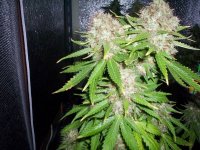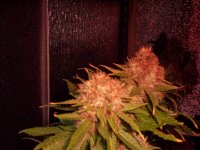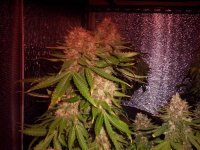Oreganic
Member
Ok, well my question is... why?
More trichomes does not equal higher potency, so what is the point of increasing the resin content, aside from bag appeal? It has been my experience that any bud that has been enhanced through nutrients, so that it has a higher trichome production, has tended to be harsher, with a poor burn. Of course many factors could contribute, but the bottom line is that I have never noticed a correlation with trichomes and potency, so... why would you want more trichomes?
More trichomes does not equal higher potency, so what is the point of increasing the resin content, aside from bag appeal? It has been my experience that any bud that has been enhanced through nutrients, so that it has a higher trichome production, has tended to be harsher, with a poor burn. Of course many factors could contribute, but the bottom line is that I have never noticed a correlation with trichomes and potency, so... why would you want more trichomes?






